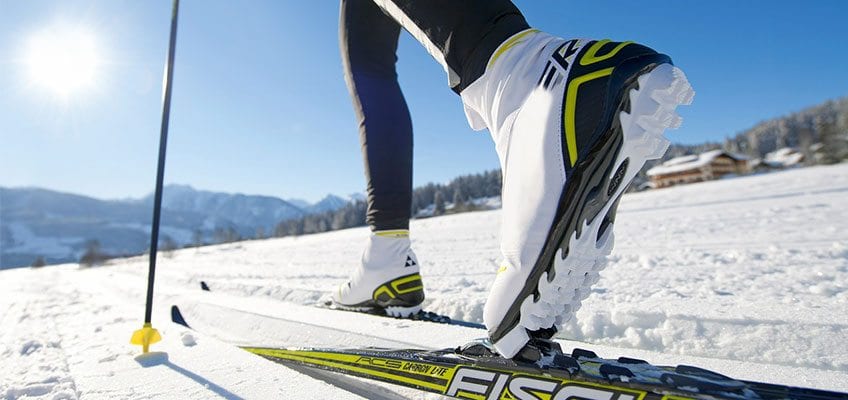The History of Skiing

Attribution: Title: Skiing Binding | Author: Stux | Licence: CC0 Public Domain
Early rock paintings and skis preserved in marshlands show that people used skis over 5000 years ago
The oldest evidence in the history of skiing was a wooden ski found during an archaeological excavation at Lake Sindor in Moscow dating back to 6300-5000 B.C.
Originally skiing was practical and used for hunting and transportation purposes. Skiing became popular around the 1800s globally and over the years has evolved and become a favourite recreational activity and sport. Besides being a great source of entertainment, it now provides vital economic support to ski resorts and communities.
The word ‘Ski’ is derived from the Old Norse word ‘skio’ meaning stick of wood. Old Norse was the language spoken by inhabitants of Scandinavia during the Viking Age. Skis were regularly used by Scandinavian farmers, warriors and hunters throughout the medieval period. By the turn of the 18th century, the Swedish army began to train and compete on skis.
A Brief Timeline
In 1850, woodcarvers from Norway invented the cambered ski which was a bow shape cambered ski that arched up towards the centre to distribute the weight of the skier more evenly. It was thinner, lighter, faster and floated more easily compared to the old skis which were made thicker to glide so that skiers did not have to bow downwards and sink in the snow.
1868
Sondre Norheim, the pioneer of modern skiing and the father of Telemark skiing invented the Telemark ski. It was the first ski with a side cut that flexed more easily when tipped on the edge which prevented skiers from skidding sideways. Norheim formed a small pioneer group of skiers and developed the first dynamic turns in downhill running.
1882
Norwegian ski makers produced the first ever hickory skis. These skis were thinner, tougher and more flexible. The hard wood made it less likely for skiers to sideslip during a downhill run. Hickory was very expensive to import from Louisiana, so Norwegian settlers with easy access to lumber in the U.S began to produce the skis at a cheaper rate. By 1887, well known Norwegian ski makers slowly began relocating to the U.S.
1893
The two layer laminated ski was invented by H.M Christiansen. By combining a hickory with a lighter body of basswood, he reduced the need to carve out thick planks of hardwood. The two layer laminated ski was lighter, springier and more flexible.
1928
Rudolph Lettner invented the segmented steel edge which gave skis much better grip whilst still letting the wood flex naturally.
1932
Bjørn Ullevoldsaeter and George Aaland invented the three layer laminated skis. As the ski was made waterproof, it did not delaminate easily and lasted longer.
1934
M.Vickey began limited production of solid aluminium ski.
1946
Gomme Limited produced the Gomme ski which was a laminated wood core sandwiched between two top plastic layers and a bottom metal layer.
1948
Chris Hoerle produced the Chris ski which was the first ski with a nonstop, low drag, integrated steel edge.
1949
Howard Head invented the most commercially successful metal ski. The ski consists of plywood core glued under pressure and heat between top and bottom aluminium sheets with plastic sidewalls.
1952
Bud Phillips Ski, the first fiberglass reinforced plastic ski was invented.
1955
Holley Ski and the Dynaglass Ski were invented by Dan Holley and Dale Boison.
1955
Andreas Kofler invented the first polyethylene base. Kofix used in making skis proved to be slippery in snow to exclude the need for wax. So the use of polyethylene made it easy to repair scratches and other gouges.
1959
Fred Langendorf and Art Molnar introduced the first successful plastic fiberglass ski. The invention paved the way for fiberglass to replace wood and aluminium in most skis.
Skiing today is made for enjoyment. It is now specialized for certain criteria, terrain and skiers capabilities. The current ski technology can increase speed and give superior control through a mixture of shape, width, length and lightweight materials.
Leave a Reply
Want to join the discussion?Feel free to contribute!